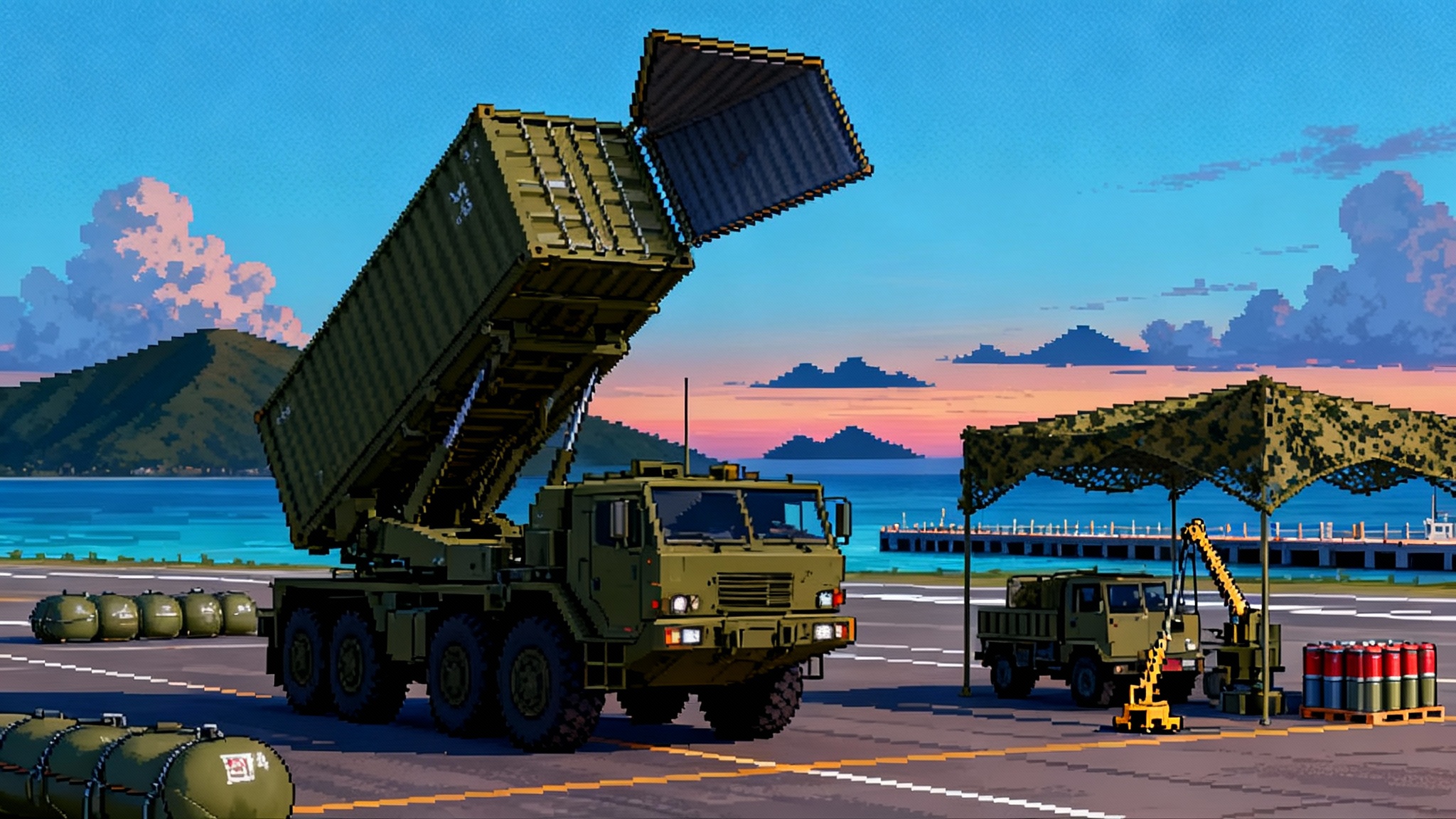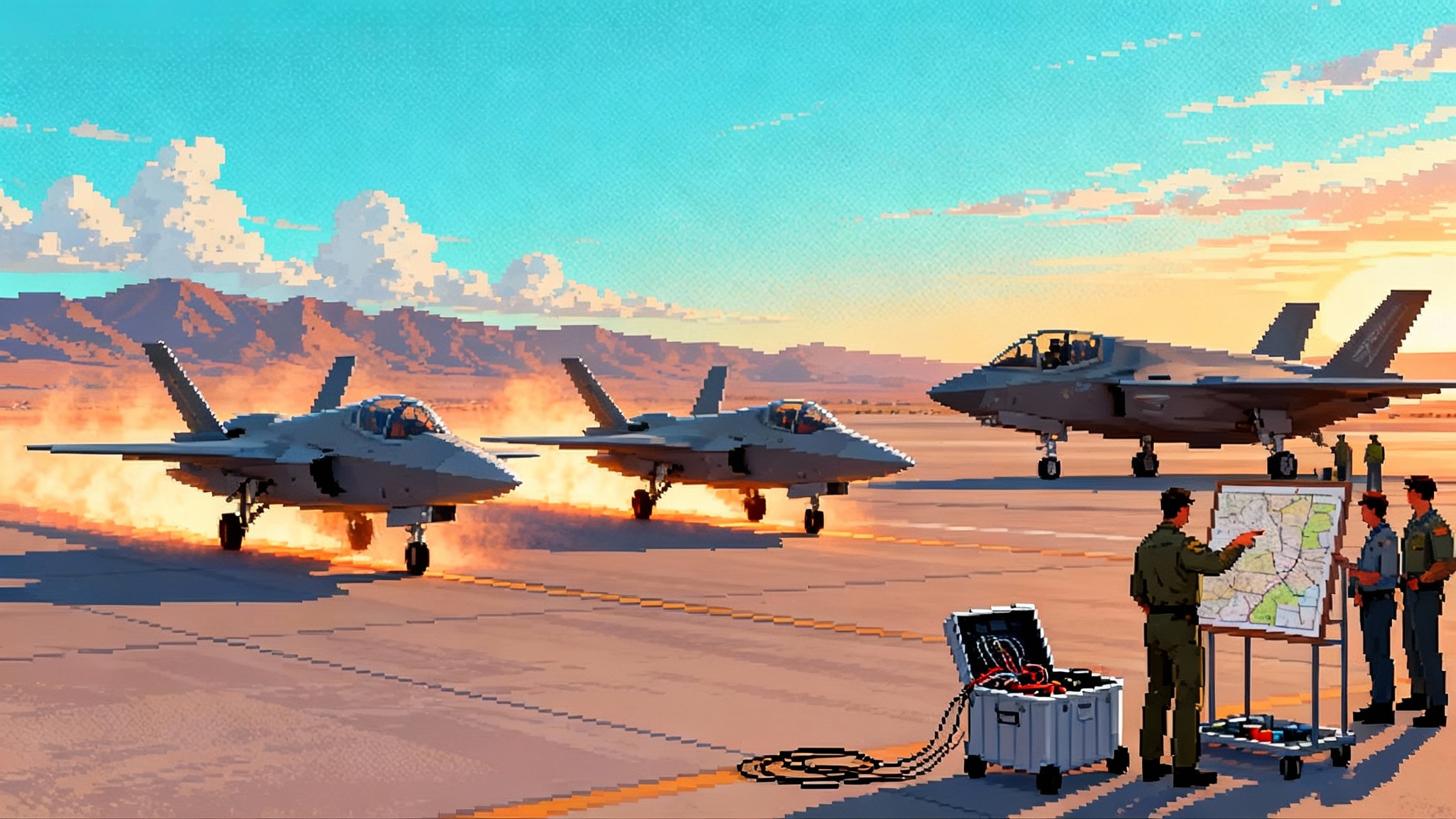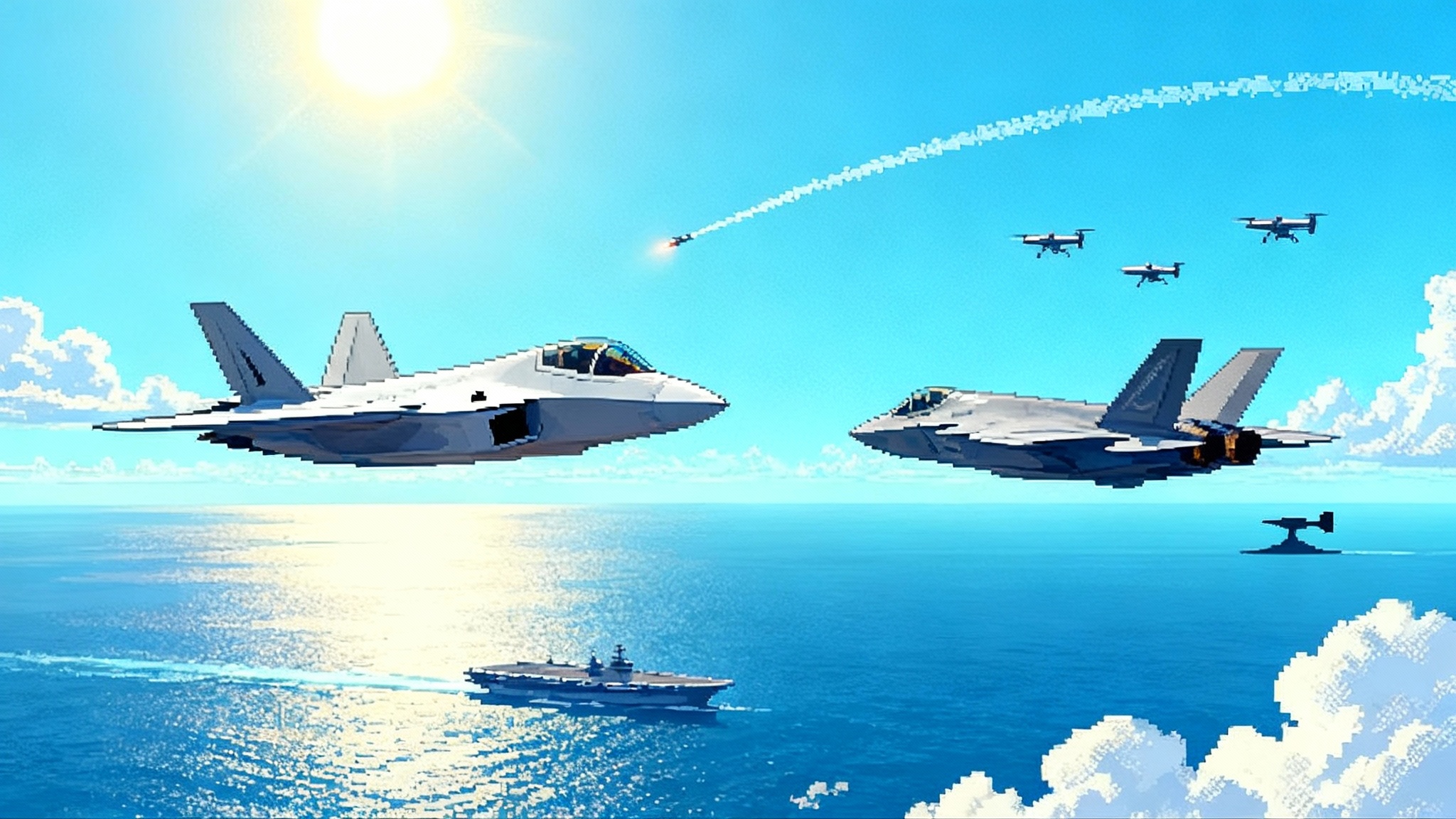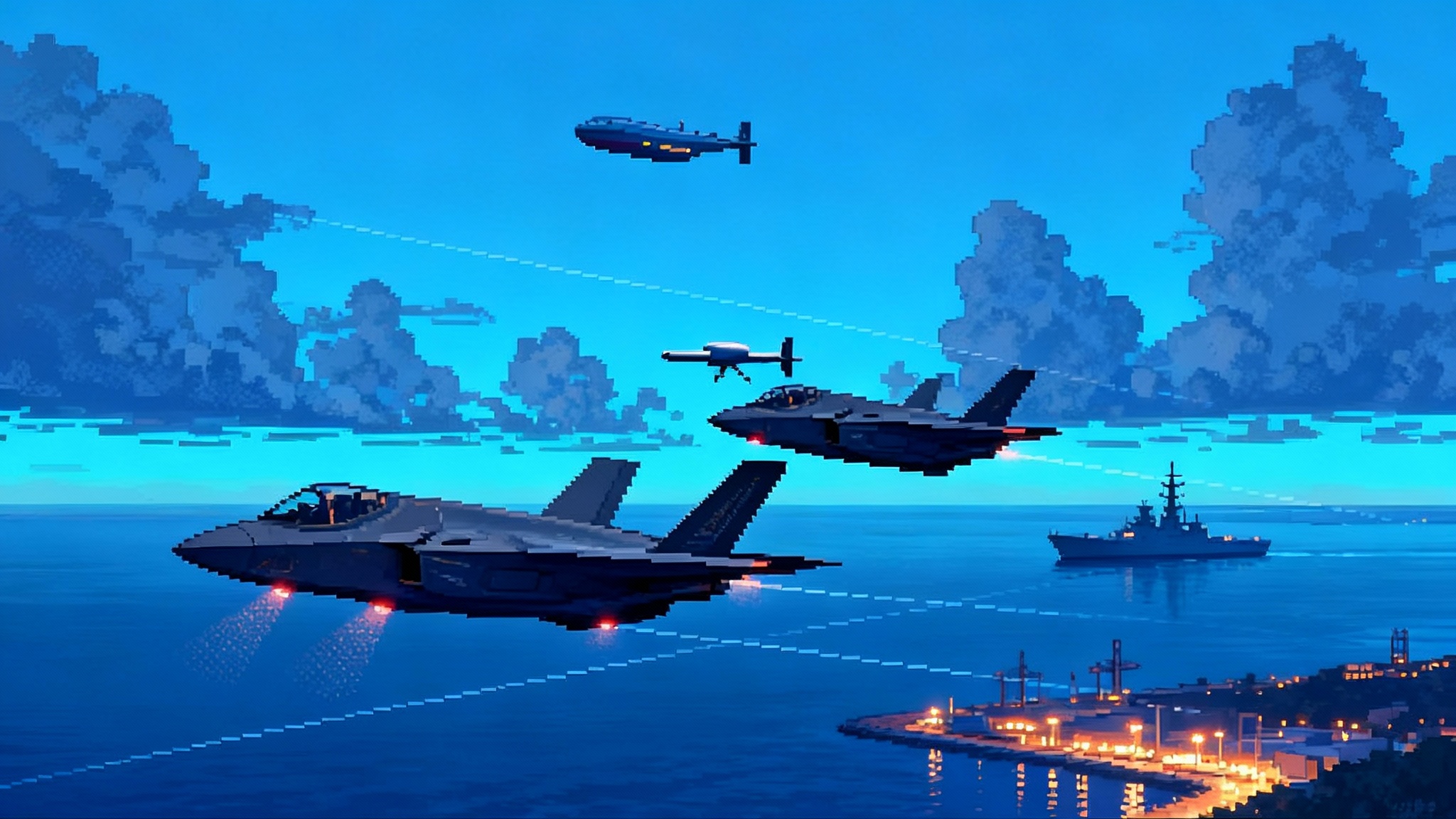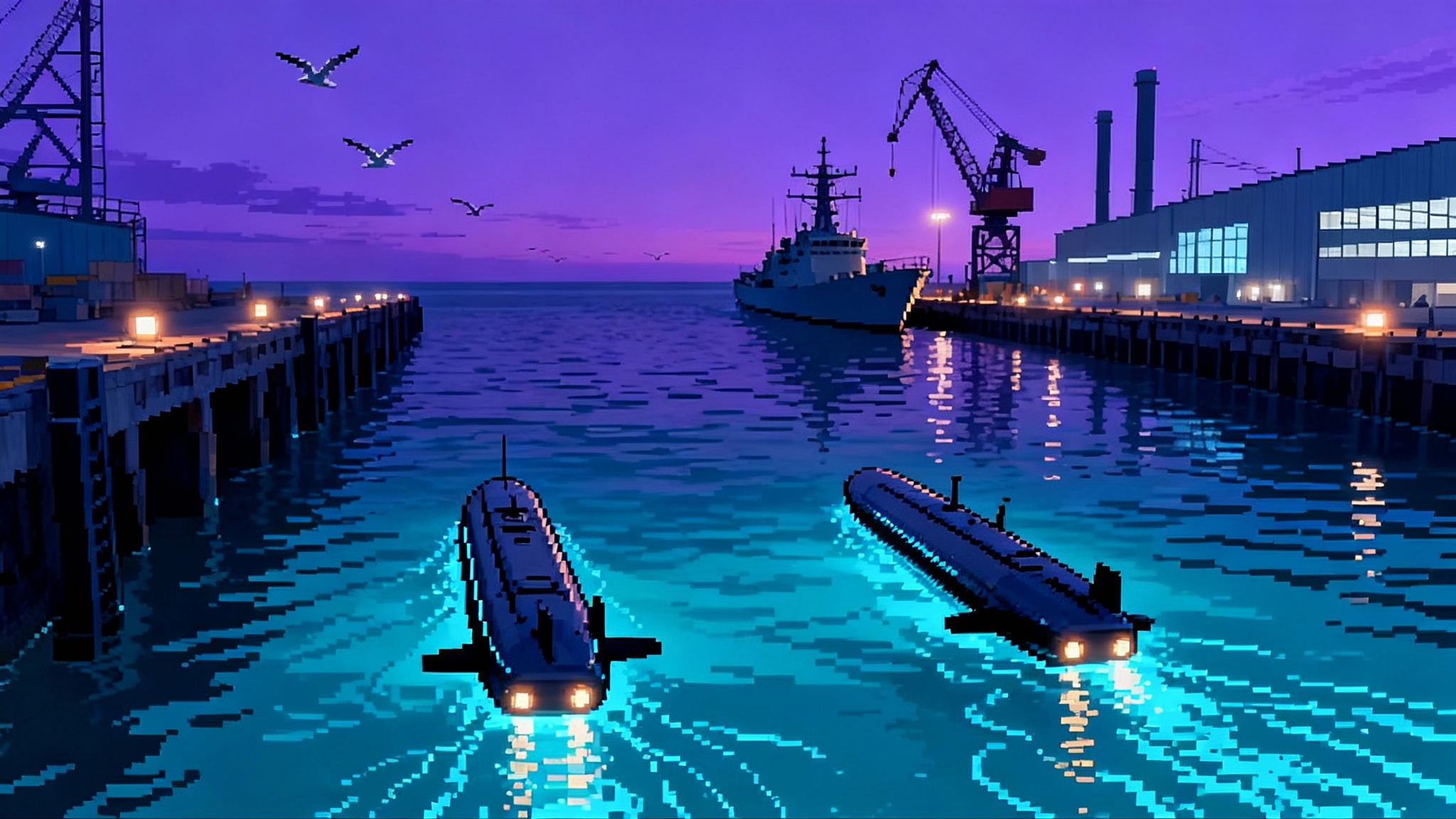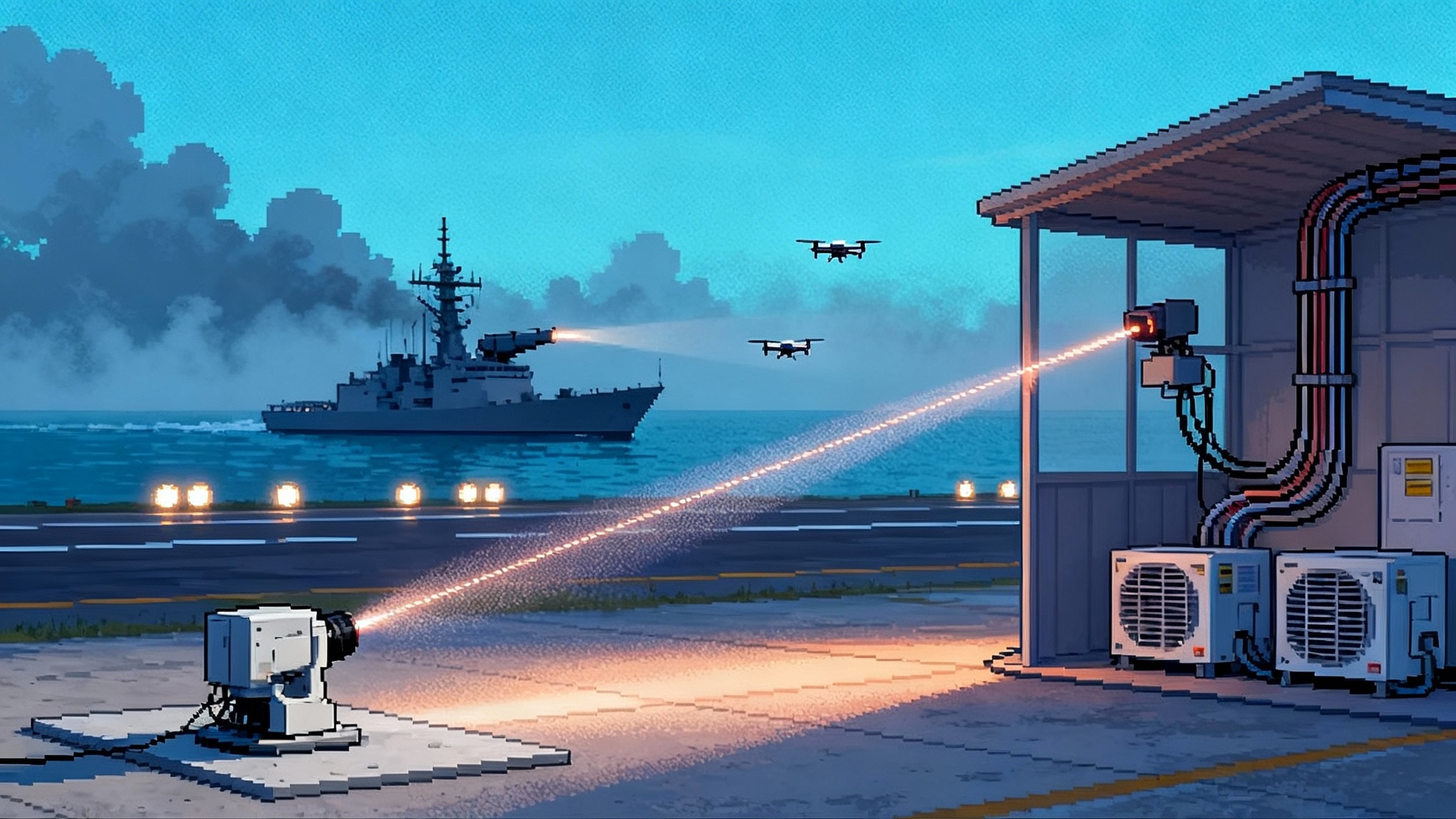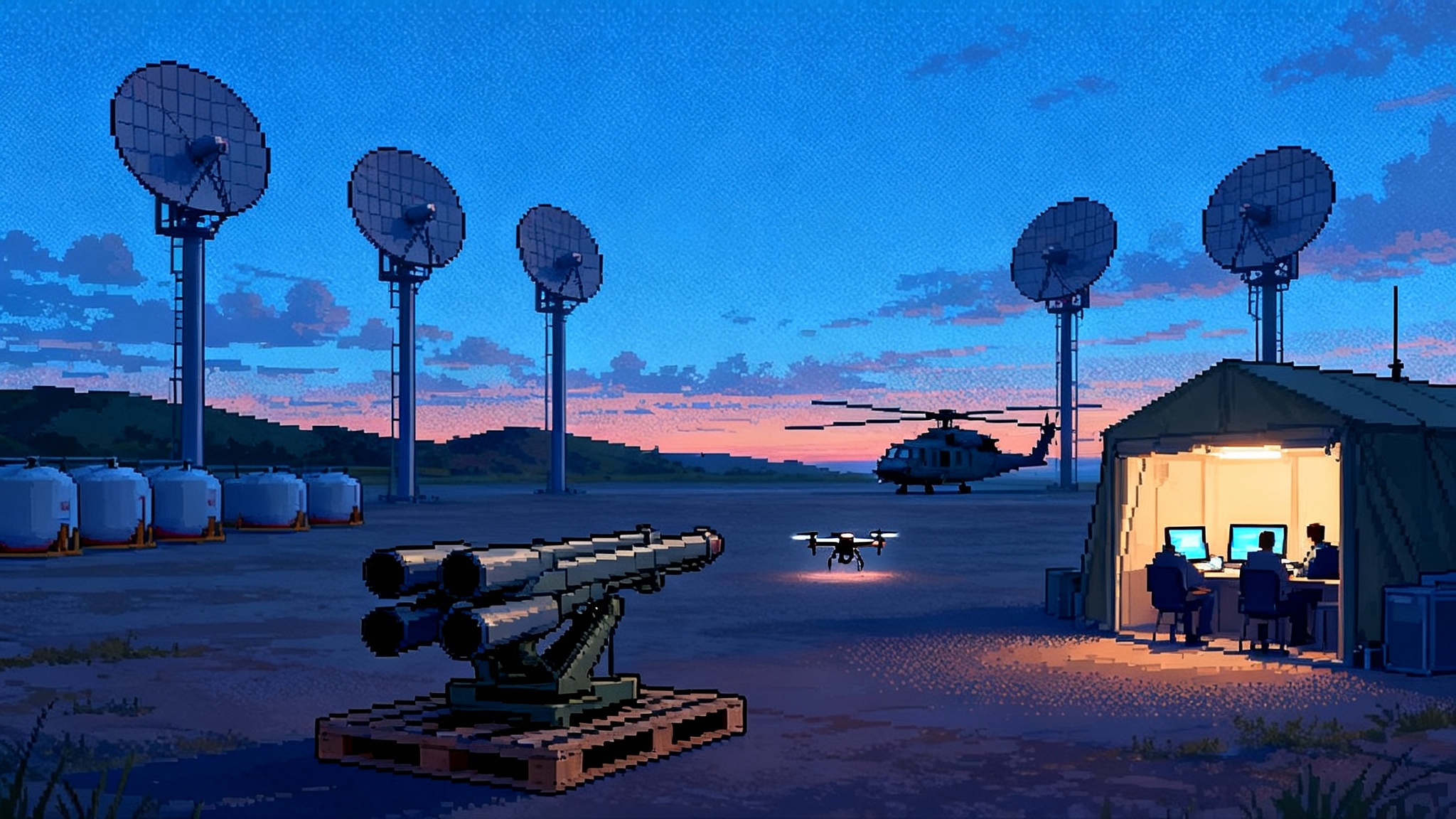Defiant’s Blue‑Water Debut and the Rise of Uncrewed Fleets
DARPA’s USX-1 Defiant just ran crewless blue-water trials, signaling a shift from one-off demos to scalable, modular uncrewed fleets. Here is what NOMARS unlocks, how costs change, and what to watch as the Navy moves to field.
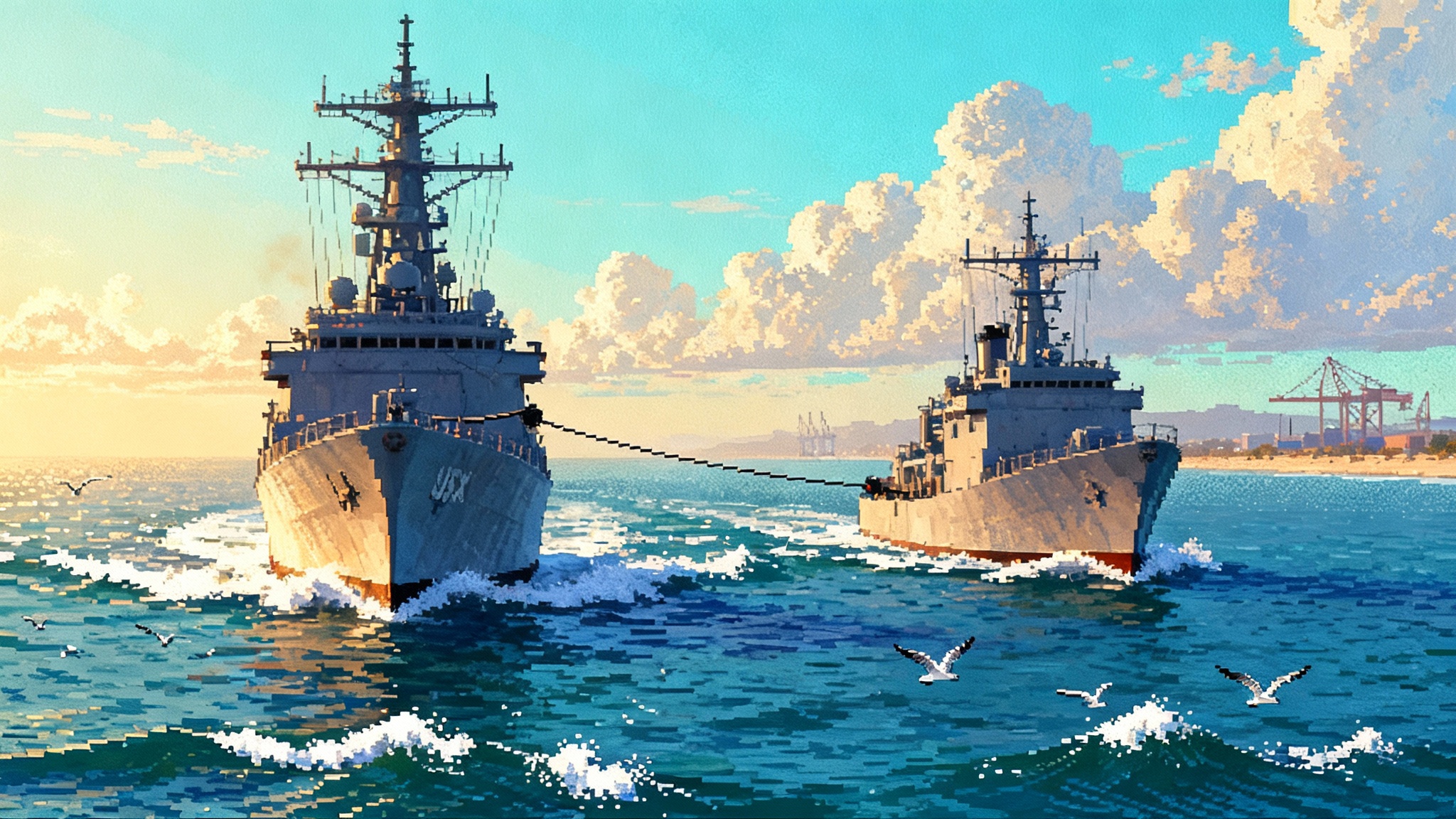
Breaking water: Defiant leaves the pier and changes the script
On August 11, 2025, DARPA christened the USX-1 Defiant in Everett, Washington. By early September the ship had completed pre-departure checks in the Strait of Juan de Fuca, then reached open ocean and headed south. On September 8 it arrived at Port Hueneme, California, and in mid-September the program team ran a set of high-stakes trials: automated fueling at sea using water in place of fuel to validate the choreography, plus autonomous dockings, undockings, harbor entries, and exits. All of that occurred with no one aboard the Defiant. These milestones are documented in DARPA’s running feature on the demonstration campaign, which provides dates, images, and test notes in sequence for the month of September 2025 Defiant’s September milestones.
The ship is the demonstrator for a deceptively simple idea with big consequences. NOMARS stands for No Manning Required Ship. Defiant was designed from the keel up with no passageways, no bunks, no galley, and no ladders. Less volume for people means more room for machinery and payload, higher reliability through simpler systems, and hull forms optimized for the job rather than for habitability. It is a workboat-tough, 180-foot, medium-displacement platform built for blue-water endurance.
What a no-crew design actually unlocks
A purpose-built uncrewed surface combatant is not a crewed patrol craft with the crew removed. It is a different machine. Think of a smartphone compared to an old landline phone. One was designed to run apps, the other to carry voice. Defiant was designed to run payloads and autonomy software, not to carry sailors.
- Space and mass go to payloads and power. Without berthing, medical spaces, or human-rated firefighting systems, designers can reserve more weight and volume for sensors, effectors, batteries, and fuel. That increases endurance and lets a medium hull carry the sort of mission packages you would expect on much larger vessels.
- Reliability is engineered, not assumed. NOMARS pushes a principle called graceful degradation. Instead of building a few complex systems that must not fail, the ship uses redundant, simpler subsystems that can fail by parts without halting the mission. The autonomy stack reconfigures around faults the way a data center routes around a bad server.
- Maintainability moves to the pier. The hull form and machinery are selected so that routine work fits in commercial yards that build and service tugs, ferries, and offshore workboats. The result is higher availability and a broader maintenance base.
The cost curve has a keel
For ship programs, personnel cost during the life of the ship typically rivals or exceeds procurement cost. A medium crewed surface combatant can require dozens of sailors per hull, and the fully burdened cost of a single sailor can exceed six figures per year when you include training, rotations, housing, and healthcare. Multiply that across a 20-year life and the crew line item becomes a major driver of total ownership cost.
A no-crew design removes that line item entirely. Here is a simple envelope calculation to illustrate the shift:
- Assume a comparable crewed 180-foot vessel would require 24 sailors. At a conservative fully burdened average of 150,000 dollars per sailor per year, that is 3.6 million dollars per hull per year in personnel cost.
- Over 10 years, before fuel and depot maintenance, that is 36 million dollars per hull dedicated to people. Remove it, and you can buy more hulls, more payloads, or more spares.
Defiant’s design also trades expensive, human-rated systems for simpler industrial alternatives. No shock-mounted bunks. No conditioned air sized for human comfort across every compartment. Fire protection can focus on machinery spaces and magazines instead of accommodation decks. Those choices lower acquisition cost and reduce the number of unique parts that must be stocked forward.
Just as important, production can scale beyond a handful of major naval shipyards. The program emphasizes a hull and machinery package that Tier III commercial yards can build and repair. That spreads work across the tug and ferry industrial base and shortens cycle time from award to launch. A fleet manager cares about cost per mission hour and time to field. A no-crew, workboat-manufacturable hull changes both variables at once. It mirrors the air domain, where uncrewed fighters reset the cost curve.
MOSA payloads turn hulls into apps
Modular Open Systems Approach, or MOSA, makes the hull an operating system and each payload a software app. Standard electrical, mechanical, and data interfaces let a ship swap payloads without cutting steel or writing custom code for every change. In practical terms:
- A Defiant-class hull configured as a picket this month could carry a long-range surface search radar, an infrared search and track, and a radio frequency sensor package. Next month the same hull could receive a towed acoustic array and a compact electronic warfare suite to support anti-submarine screening.
- ISO containerized mission modules can bring vertical or angled launchers, decoy dispensers, mine countermeasures tools, or a small unmanned aircraft deck. The hull becomes a payload truck whose value grows as the payload ecosystem grows.
- A MOSA approach also broadens the supplier set. Companies that build radios, sonars, and effectors for other platforms can certify to an open standard and compete without owning the whole ship. That increases competition and speeds upgrades.
The industrial upside is straightforward. Open interfaces and containerized payloads drive recurring business for sensor and effector manufacturers, reduce integration risk for the government, and widen the aperture for small companies that can innovate faster in specific niches.
How a new hull rewires fleet concepts of operations
Purpose-built uncrewed surface vessels change where and how commanders take risk at sea. Several mission patterns are already clear:
- Pickets that see first. A ring of four to eight Defiant-class pickets can extend a carrier or amphibious group’s eyes and ears by hundreds of miles. Pickets can hold position in rough seas, share radar and radio frequency observations, and feed targeting to the force without exposing crewed ships to first contact.
- Deception and decoys. A few hulls can carry high-power emitters and inflatable or towed decoys that mimic the signatures of larger ships. In a missile fight, drawing enemy fires onto a cheap, uncrewed hull is a victory.
- Magazine ships. Containerized launchers give a small hull a surprisingly large magazine. A sea-denial package could include long-range antiship missiles, loitering munitions, or land-attack weapons to add depth to a strike group without adding another destroyer.
- Attritable logistics. Moving fuel, parts, and blood across dangerous stretches of water is one of the hardest problems in contested logistics. An uncrewed hull reduces the risk of resupply runs and can shuttle between prearranged points even under emission control.
None of these ideas replaces large, crewed ships. Instead, uncrewed hulls expand the geometry of the fight. They let admirals trade cheap hulls for adversary time, adversary missiles, or adversary attention, while preserving high-value ships for moments that truly require them.
From DARPA to fleet: PMS-406 and USVRON-1
DARPA has said it will turn Defiant over to the Navy’s Unmanned Maritime Systems Program Office, known as PMS-406, after the at-sea demonstration campaign. The Navy’s Unmanned Surface Vessel Squadron One, based at Naval Base Ventura County in Port Hueneme, has already participated in the September trials and is the logical first operational home once the transition occurs. DARPA’s christening announcement outlines both the handover plan and a congressional funding signal for purpose-built medium uncrewed surface vessels Defiant christening and transition path.
A realistic transition pathway from late 2025 through 2028 looks like this:
- 2026: Handover of the demonstrator to PMS-406. USVRON-1 continues developmental operations with Defiant, focused on reliability, remote maintenance, fueling at sea with fuel rather than water, and first payload swaps under MOSA interfaces.
- 2027: Early integration into fleet exercises on both coasts. This includes picket and deception roles in strike group workups, a limited magazine ship demonstration with live firings at a test range, and logistics shuttles along preplanned routes.
- 2028: First multi-ship uncrewed surface division conducting distributed maritime operations with a crewed task group. Measure of merit is days of availability per quarter at sea, not just trial events. A small initial production lot of purpose-built hulls begins if reliability and safety thresholds are met.
These steps are not automatic. They depend on demonstrating closed-loop safety in busy shipping lanes, reliable remote maintenance in ordinary commercial yards, and the ability to connect to fleet networks without creating new cyber risk.
The risk ledger: rules, cyber, and command and control
Every new capability comes with a ledger of risks. For uncrewed ships the big four are maritime rules of the road, rules of engagement, cyber and electromagnetic hardening, and command and control in degraded environments.
- COLREGs and traffic separation schemes. An uncrewed ship must comply with the International Regulations for Preventing Collisions at Sea, and local harbor rules. That means detect, decide, and maneuver cycles that are explainable and auditable. Good practice is to maintain a black-box timeline for every avoidance action: sensor observations, classification confidence, the rule invoked, and the maneuver taken. This creates accountable, reviewable behavior when a human is not on the bridge.
- Rules of engagement. Use of force will remain under human control. The practical design question is how quickly and reliably an operator can authorize or halt a weapon employment over contested communications. Clear guardrails help. For example, a magazine ship can be permitted to cold launch only upon receipt of a signed authorization token, and missiles will be stored in a safe state until that token is validated.
- Cyber and electromagnetic interference. The ship’s brain is software. Hardened, physically separated compute nodes reduce single points of failure. Critical control lines should have shielded runs, redundant paths, and behavior monitors that trip to a locked, minimum-emissions navigation mode if anomalies are detected. The vessel should be able to reboot its autonomy stack in a known good state without human hands.
- C2 in GPS-denied seas. When satellite navigation is jammed or spoofed, the ship needs alternatives. Celestial fixes, inertial navigation updated by radar ranges on known land features, and visual odometry against the horizon can provide a drift-bounded position. Communications should include low probability of intercept and detection links and diverse paths, from directional line-of-sight radios to narrowband satellite and high frequency fallback. Preplanned lost-comms behaviors, like proceeding to a rally point and going quiet, are essential.
The operational test community should publish specific measures of performance. For example: percentage of COLREGs interactions resolved correctly in busy ports; mean time to patch a critical autonomy update across a division of ships; probability of maintaining a positive control loop under 30 seconds from command to effect using an austere, contested link.
Industry impact: more yards, more vendors, more speed
Defiant’s design assumes American yards that build ferries, tugs, and offshore workboats can construct and repair uncrewed hulls. That matters because it adds capacity without displacing the large surface combatant lines that are already full. It also anchors more of the value chain domestically, from composite masts to podded propulsion units and ruggedized compute. A MOSA ecosystem lets small companies compete with payloads and software rather than entire ships, and it creates a steady upgrade cadence that keeps skills sharp in between big platform buys. The approach pairs naturally with the defense factory surge in 2025.
For program managers, the near-term to-do list is practical and specific: certify a small set of physical and digital interfaces for mission modules, stand up a shared integration lab where payload vendors can plug into a reference ship controller, and fund test articles that stress the autonomy stack in cluttered, high-traffic waters. For shipbuilders, the action is to qualify more commercial yards to Navy quality benchmarks and to stock common spares regionally to support high tempo operations.
Allies and the coalition edge
Allies are already moving to field uncrewed surface systems for surveillance, mine countermeasures, and strike. AUKUS Pillar II puts autonomy, artificial intelligence, and advanced networks at the center of cooperation, and medium uncrewed surface vessels fit those lanes. NATO navies have been experimenting with uncrewed surface vessels in the Baltic and Atlantic for infrastructure protection and distributed surveillance. The key to coalition scale is standards. If payloads share interfaces and autonomy software can exchange intent and sensor tracks across secure gateways, a mixed U.S., British, Australian, and European flotilla can patrol choke points, escort convoys, and run deception lines as a single team. Australia’s experience with large autonomous undersea systems is instructive; see Australia’s XL-AUV push goes fleet.
For partners, the attraction is the same as for the U.S. Navy: a small hull with an open payload bay that you can afford to risk in contested waters, that you can maintain in commercial yards, and that you can upgrade as new sensors and effectors mature. Early bilateral projects can focus on shared payloads that matter in specific theaters, like seabed surveillance and anti-drone defense for the North Atlantic, or long-endurance sensing and strike corridors in the Indo-Pacific.
What to watch over the next 24 months
- Endurance numbers on the open ocean. The demonstration is about reliability over time, not just single events. Days at sea without human touch and the percentage of time on mission profile are the statistics to track.
- Fueling at sea with fuel. September’s water-in-lieu-of-fuel approach proved the choreography. The next step is a full fueling evolution, then doing it in heavier sea states.
- Payload swaps under MOSA. Look for the first demonstrations where the ship returns to port, receives a different mission package, and returns to sea within a week with minimal engineering labor.
- Integration in real exercises. The step from pier demos to being a numbered player in a strike group or amphibious ready group exercise is where trust is built. Expect USVRON-1 to lead the way.
- Acquisition signals. If early reliability goals are met, watch for a small initial production lot managed by PMS-406, with options that let the Navy flex up as the industrial base proves it can build at tempo.
The fleet that learns at sea
Defiant’s late-summer christening and September trials were not just a technology demo. They were a proof that a ship with no crew can navigate, refuel, berth, and get underway in the middle of a working port while obeying the rules and staying inside a control loop visible to sailors onshore. That unlocks a different way to think about mass at sea. Put enough of these hulls in the water and you can scout wider, strike deeper, and resupply under fire without asking sailors to stand on the receiving end of the risk.
There is still work to do. The Navy must codify how uncrewed ships behave in mixed traffic and under stress, harden the autonomy stack against cyber and electromagnetic attack, and prove command and control across jammed oceans. The industrial base must deliver repeatable builds in commercial yards, not one-offs. Allies must align on interfaces and data standards so a coalition can deploy a shared flotilla without months of bespoke integration.
If the team behind NOMARS keeps hitting milestones, the payoff is real. By 2028, we could see the first operational uncrewed surface divisions escorting convoys, guarding seabed cables, and shadowing adversary fleets while larger crewed ships conserve their missiles and their margins. Defiant’s blue-water debut shows the door is open. Now the Navy, industry, and allies can walk through it together.
